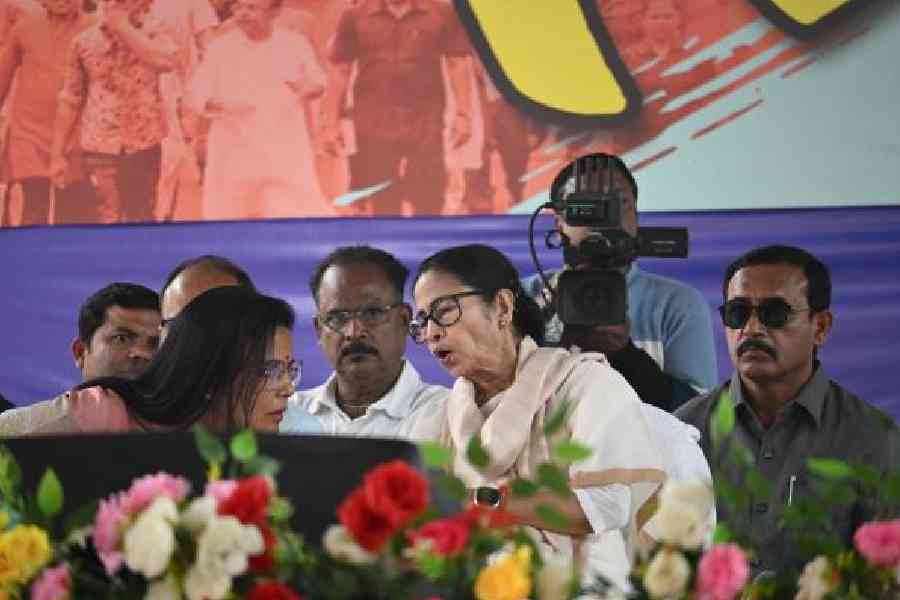 |
| Uniformly loud: A scene from Warish by Nabyamukh (Picture by Sanat K. Sinha) |
For an artist, life, death, and all its rituals are not just everyday experiences. Rather, they represent a rite of passage, which goes a long way in shaping his or her skills and sensibilities. Neel Maati Laal Kankad examines precisely these aspects of an artist’s consciousness through the fascinating life of the sculptor Ramkinkar Baij. The play, presented by Mukhomukhi, was staged at the Madhudan Mancha on August 1 to mark the golden jubilee celebrations of the Lalit Kala Akademi.
Playwright Navendu Sen, himself an artist, handled the biographical material at his disposal well. The play was a journey from innocence to experience, picking upon three crucial phases of Baij’s life ? his adolescence, youth and old age.
In the first phase, Baij (or Kinkar, as he was known) was presented as nature’s child, learning from the open skies and fields. The two pivotal incidents in his life ? the death of his sister Indu and his first sexual experience with Dharabati ? were handled brilliantly.
As the fire of Indu’s pyre crackled offstage, Baij could only see the beauty of the flames’s colours reflected on his face and eyes. However, what jarred was the simplistic presentation of his character, which showed him as a bumbling, ill-developed person not quite in keeping with his age. The discrimination Baij faced because of his low caste was barely touched upon and was too flimsy to serve any dramatic purpose.
Baij’s encounter with Chandrabati in Santiniketan was almost epiphanic. He realised that she could not be broken up and remade like one of his sculptures ? that art, too, had its limitations.
Subhendu Maity’s music worked as a dynamic backdrop, as the folk tunes of Bhadu, Tushu and Jhumur of Baij’s early life complemented the Rabindrasangeet he heard later in Santiniketan. Director Biplab Banerjee did justice to the sets designed by Samir Aich. As sunflowers bloomed at his feet, an old Baij stumbled ahead, crossing one doorway after another, each in the form of a huge geometric shape.
The Ganakrishti Natya Utsav got over with two plays of remarkably different flavours. Gatha ? The 1st Text (Rabindra Sadan, July 26), a play in Assamese performed by Jirsong Theatre of Guwahati, tackled the questions of race, ethnicity and Western influence in modern-day Assam. Without a coherent plot, the play moved ahead through a series of song-and-dance sequences.
The audiovisual text was stylised brilliantly by director Rabijita Gogoi ? the cityscape was presented as a nightmarish backdrop, with the silhouettes of buildings sticking out at odd angles, and common men dressed as crows having a speech of meaningless, harsh sounds.
Warish (Academy of Fine Arts, July 27), staged by Nabyamukh, was inspired by a true story found in the court files of Bihar. The plot revolved around zamindar Chiranji Chaudhary’s desire for a male child and the crude feudal politics behind this. The village girl Gulabi, who agreed to trade her child for money, became a fugitive and finally ended up at the gallows.
The acting was uniformly loud and the play failed to make any point ? moral or otherwise. Debashish Biswas’s raving and ranting zamindar would do even Gabbar Singh proud. Mannerism also marred his acting.










